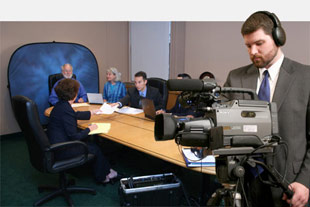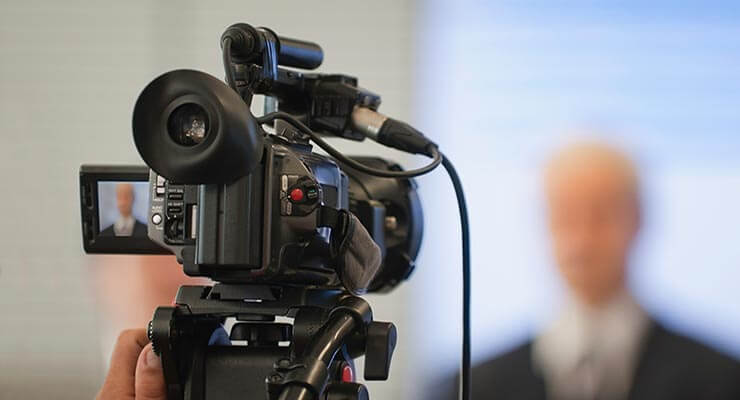How Legal Videography Can Improve Your Courtroom Efficiency
How Legal Videography Can Improve Your Courtroom Efficiency
Blog Article
Why Lawful Videography Is Critical for Accurate Court Recordings
The function of legal videography in court room setups can not be overstated, as it works as a vital device for maintaining the honesty of court documents. By capturing both spoken and non-verbal interaction, it boosts the clarity of witness statements and mirrors the subtleties of court room communications. This detailed documents not just help in minimizing prospective misconceptions yet also supports appellate reviews, therefore strengthening the judicial procedure. Nonetheless, the ramifications of integrating lawful videography right into typical court practices elevate essential concerns about its wider influence on the lawful system. What might these ramifications require?
Importance of Visual Evidence
In the world of lawful proceedings, the value of visual evidence can not be overstated. Visual evidence works as an effective device in establishing truths, proving testaments, and boosting the total clarity of a case. This kind of proof, which consists of photos, video clips, and diagrams, can supply a substantial context that verbal descriptions frequently do not have, therefore offering juries and judges a more clear understanding of the conditions surrounding a case.
Furthermore, aesthetic proof aids in the retention of information. Human cognition is naturally visual, and individuals are more probable to bear in mind and understand information presented in a visual layout. In the court room, this can be important, as compelling visual evidence can sway point of views and strengthen the narrative presented by legal agents.
Furthermore, the usage of aesthetic evidence can reduce misunderstandings and obscurities that usually emerge from verbal exchanges. By giving a straight representation of occasions, aesthetic proof helps to eliminate subjective analyses and promotes a more unbiased assessment of the truths. The combination of aesthetic evidence right into lawful proceedings not only enhances the stability of the judicial procedure but additionally boosts the chance of attaining a simply result.
Catching Non-Verbal Hints
Utilizing advanced videography methods can significantly boost the capture of non-verbal hints during legal procedures. Non-verbal communication, including faces, body language, and eye call, plays a vital role in conveying feelings and intents that may not be clearly stated in verbal testament. legal videography. Legal videography utilizes high-def electronic cameras and critical angles to ensure that these refined cues are taped with clarity and accuracy
The capability to evaluate non-verbal actions can provide important context to statements made throughout court sessions. A witness's unwillingness or confidence can be translated via their pose or gestures, possibly influencing the court's perception of trustworthiness. The usage of close-up shots can assist focus on a speaker's expressions, allowing for an extra nuanced understanding of the testament.
Moreover, integrating several camera angles can produce an extensive view of interactions, highlighting dynamics between celebrations included. This complex approach not only improves the precision of the court document yet additionally help in maintaining the stability of the judicial procedure - legal videography. Eventually, capturing non-verbal cues via lawful videography promotes a richer, a lot more total depiction of courtroom process

Enhancing Testament Integrity
The integrity of testament can be significantly bolstered via making use of top notch legal videography. Video clip recordings offer as an objective tool that catches not only the talked words of witnesses however also the nuances of their delivery, consisting of tone, pacing, and emotional site link expressiveness. This multifaceted documents gives a more clear understanding of the witness's integrity and intents, which can be critical in lawful procedures.
In addition, legal videography minimizes the capacity for misinterpretations that might arise from created transcripts alone. When jurors can observe a witness's temperament and body language along with their testimony, they are better furnished to evaluate the credibility and integrity of the evidence offered. This visual context can reinforce the testimonial story, making it extra engaging and credible.
In addition, the presence of a video he said recording can hinder potential disparities in testimony. Witnesses may be extra careful in their statements when they understand they are being taped, bring about even more exact and genuine accounts. Overall, premium lawful videography enhances the stability of testament, making certain that the court has accessibility to a full and genuine depiction of the realities as conveyed by the witnesses.
Supporting Appeals and Reviews
Legal videography plays a crucial function in sustaining charms and reviews by providing a comprehensive aesthetic document of courtroom procedures. This aesthetic documentation catches not just the talked words of witnesses and lawyers yet additionally the subtleties of body language, intonation, and court room characteristics. Such components can be crucial in recognizing the context of testimonies and debates provided.
In the appellate procedure, where the emphasis is on errors of legislation and step-by-step fairness, a video clip record can work as an important tool for appellate courts. It allows courts to examine the original trial context, ensuring that choices are based on a complete understanding of the procedures. The capability to aesthetically evaluate the demeanor of witnesses or the interactions between celebrations can expose insights that written transcripts might ignore.

In addition, legal videography can aid in clearing up ambiguities in testaments or procedural rulings, thereby enhancing the basis for an allure. By providing a reliable, objective account of what taken place in court, lawful videography not just supports the integrity of the legal procedure however also encourages all parties included to make enlightened choices regarding their cases.
Enhancing Court Room Processes
Enhancing courtroom effectiveness, lawful videography simplifies processes by providing prompt access to aesthetic records of proceedings. This modern technology enables courts, lawyers, and courts to take another look at important testament and evidence, ensuring that all celebrations have a clear understanding of the case. By recording the nuances of verbal and non-verbal interaction, videography improves the document, making it easier to grasp the context and weight of testaments.

Furthermore, video recordings can help with remote participation in hearings, allowing for greater flexibility in scheduling and engagement, which is specifically important in intricate instances involving multiple stakeholders.
Verdict
To conclude, lawful videography plays a vital function in ensuring precise court recordings by providing necessary visual proof that captures both verbal and non-verbal communication. This technique improves the dependability of statements, supports appellate evaluations, and enhances court processes. By promoting a thorough understanding of court dynamics, lawful videography eventually adds to more equitable judicial end results, enhancing the integrity of the legal system and assisting in educated decision-making.
Report this page